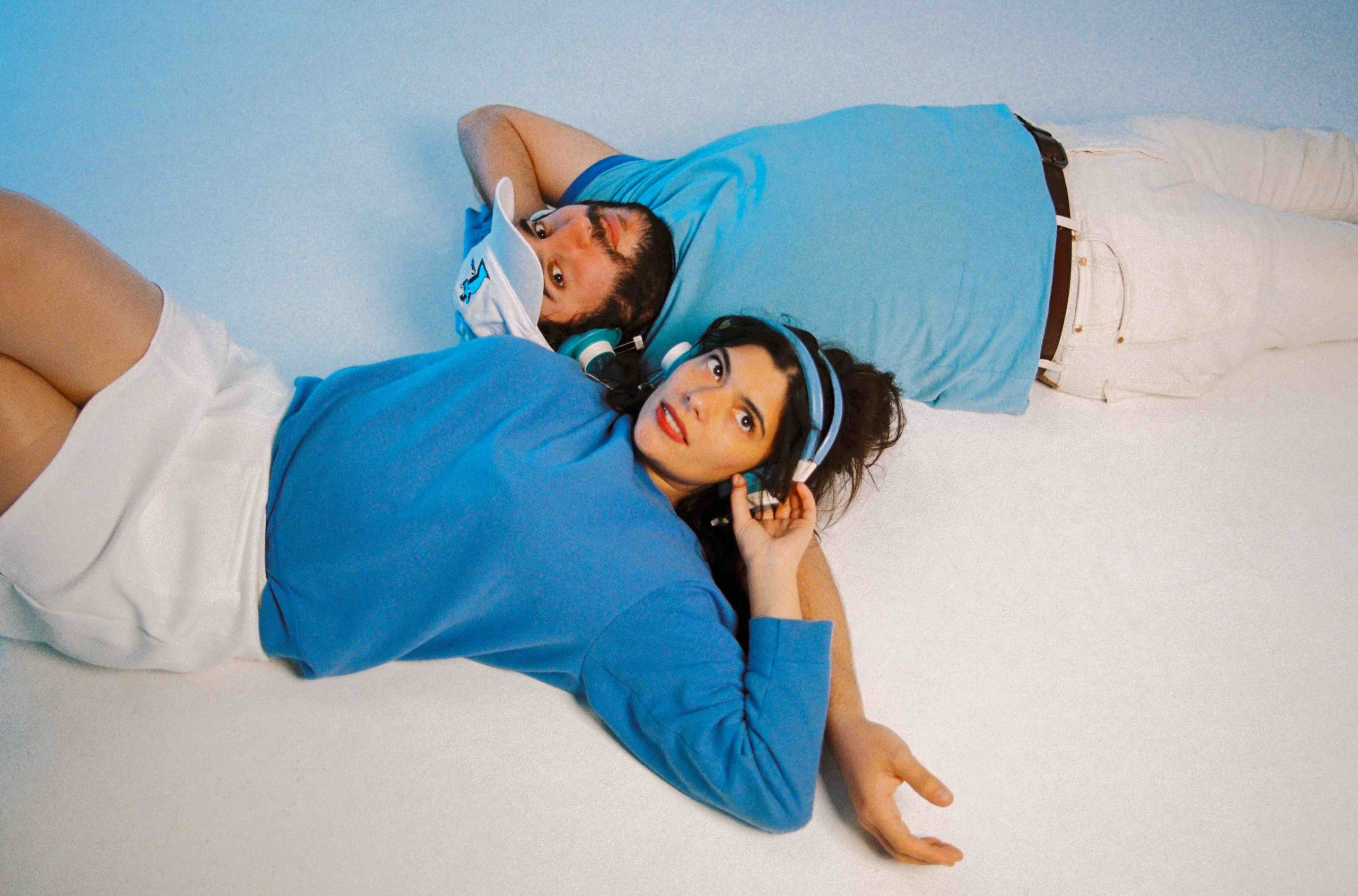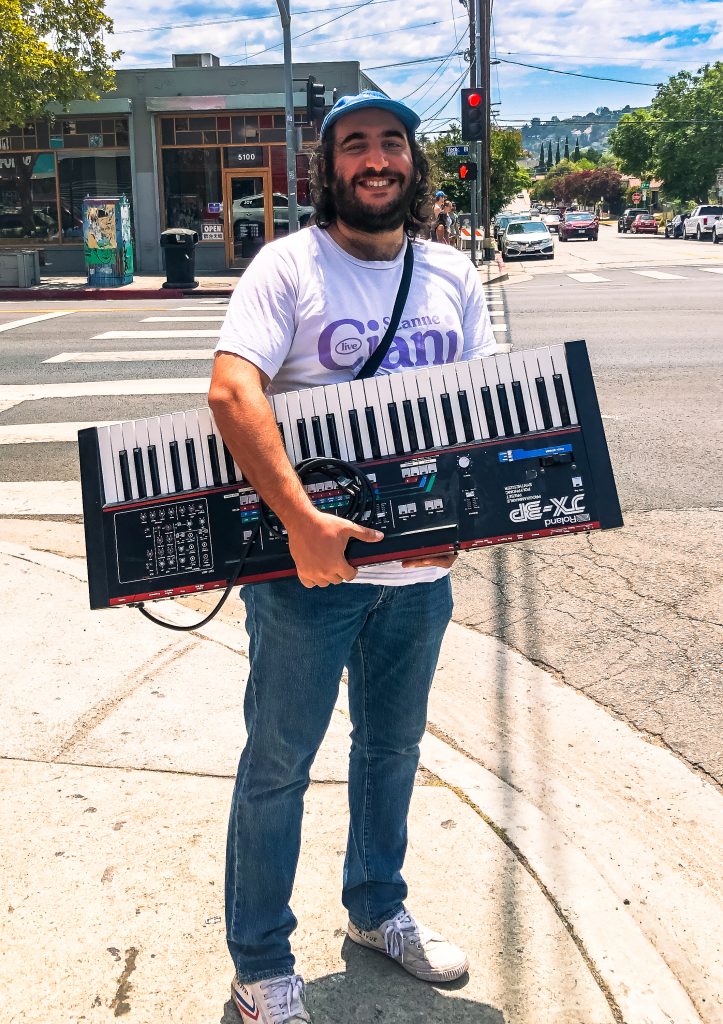Weary of indie pop’s penchant for navel-gazing solemnity, Parisians Juliette Pearl Davis and Joachim Polack packed their bags and relocated to Florida to embrace a mid-’60s sunshine pop ethos. Soaking up the new environment, early Pearl & the Oysters releases featured whirling keys and psychedelic textures, blending organic instruments with vintage Roland equipment. Their latest album, Coast 2 Coast, is no-less upbeat despite documenting their move from Florida to Los Angeles amid the 2020 pandemic. Holed up in their apartment for a year, the duo found solace in writing a series of sonic postcards to escape their isolation.
Beginnings of a Dream
Juliette Pearl Davis and Joachim Polack met in high school and bonded over their love for ’50s lounge pop and ’90s alt-rock. Still, the story of Pearl & the Oysters was unwritten. Later, the pair relocated to Florida to pursue their academic and musical dreams. “Having a music career was always the goal,” Polack says. “But we were also getting frustrated with the French scene. It felt like we were trying to make music that didn’t resonate with that audience.”
To Polack and Pearl Davis, Pearl & the Oysters was a bedroom project that became a band. Before too long, industry players started to take notice stateside. “We found a label in Florida excited enough to put the record out, but we were new to selling a record and going on tour.”
Central to the group’s colorful aesthetic is quirky covers adorning its releases. “In our minds, the music called for this type of art,” Polack explains. “We were frustrated at how serious indie pop had become and this idea that you have to feel tortured or present your music without a smile.”
Their contrarian nature led to a cheery vibe that continues to define them. “We wanted to do the opposite and for the cover of our first album to be some space opera/pop/comic type of image,” he explains. “That set the foundation for the whole Pearl & the Oysters sound, and four years later, we’re still mining that.”
“We were frustrated at how serious indie pop had become and the idea that you have to feel tortured.”
Joachim Polack
A New Reality
The group’s self-titled debut showcased Pearl & the Oysters’ breezy vibe, drawing from space-age pop, novelty music, and classic sounds from their Parisian homeland. Yet, co-writer and vocalist Juliette Pearl Davis reveals that making their latest LP, Coast 2 Coast, plunged them into a different mindset. “Many of our friends had encouraged us to move to Los Angeles, but after two months of bliss, Covid hit, and we were stuck in a tiny little apartment for a year.”
For Pearl Davis, the title contains layers of meaning. “Coast 2 Coast is not just about traveling from one coast to another, but the travel we had to make in our minds. We’d moved to a new town but couldn’t access it, leaving us with a desire to dream of something that would become part of the album’s whole mindset.”
Luckily, as life returns to normal, the pair can explore their new home. “Since then, we’ve discovered everything that LA has to offer. We live only a five-minute walk from the Vintage Synthesizer Museum, which has an incredible treasure trove of gear.”
A Remedy for Insomnia
The track “Konami” is a lavish antidote to the sense of isolation that Pearl & the Oysters experienced at the time. The stress left Pearl Davis struck by bouts of insomnia that, ironically, gave birth to the idea behind the track. “I tried every remedy for it, but then I had this vision,” she shares. “What if you’re stuck in your bed with insomnia, but a sound could make you travel to the beach and feel like you’re there?”
The pair had a specific auditory concept in mind for the sonic bed. “We wanted to create something cyclic that reminded us of the sound of waves and the sea,” Pearl Davis explains. “So, we set up a white noise machine with several surf modes where you can choose the intensity of the wave.” The lyrics even reference the soothing apparatus, adding to the peaceful mood.
Polack describes how those first tones of “Konami” represent their virtual voyage. “The opening sound of the waves brushing up against the shore is a JUNO-6 sound based on a white noise waveform,” he reveals. “Adding a filter could make the wave sound quite easily.” In addition, “Konami” utilized other tools from their treasure trove of gear. “Another secret weapon of ours is the BOSS PC-2. It’s a percussion synthesizer that we processed through a delay. We used that combination to create many of the track’s pulsing sounds and textures alongside the JUNO-6.”

“I had this vision. What if you’re stuck in your bed with insomnia, but a sound could make you travel to the beach and feel like you’re there.”
Juliette Pearl Davis
Haunting and Cool
Polack gives insight into crafting the syncopated groove that moves the track. “We usually start with some rhythm, typically a drum machine,” he says. “But ‘Konami’ came about because I’d got myself a drum kit and could play at the house without bothering anybody.”
The opportunity yielded a eureka moment. “At one point, a beat came up, and I thought, ‘Oh, we should make a song out of this.’ I recorded it on my phone, started jamming, and the track wrote itself in about five minutes. The drum pattern is the driving force behind the hook. We built a chord progression on top before scrapping the beat and recording real drums, which is a very Sly Stone kind of move.”
“The song has no chorus, which makes it a bit different from the rest of the album,” Pearl Davis adds. “It’s a beat and a loop, and the melody follows the rhythm and the chord progression. It’s more like a riff than a song, but the important part is the looping sound texture of the JUNO-6, which we think is pretty haunting and cool.”

The Sunshine Notes
The JUNO-6’s rich tonality is essential to “Konami” and is an example of Pearl & the Oysters’ overall approach to production. “The JUNO is very unique,” Polack adds. “It has a signature sound that’s soft and cushiony, the LFO is pretty low, and it has a slow vibrato that offers a very seasick synth sound. It sounds like Stevie Wonder or music from Japan in the ’70s, and we love all those patches.”
Capturing that specific vibe became the goal. “For ‘Konami,’ we wanted a sound close to that, so we doubled and panned it to get the main rhythm track going. We also put elements on every song that we like to call the ‘sunshine notes.’ We didn’t invent it. It came from the Roy Ayers track ‘Everybody Loves the Sunshine,’ where a single string machine note towers over the arrangement. It’s a production trick that Ayers pioneered or made famous.”
Pearl & the Oysters leaned on another synth to create those sunny tones. “We created that using a Roland RS-09, an organ/string machine. We love it and have used it ever since our first album. It doesn’t sound like any other string machine.”
“The JUNO is unique. It has a signature sound that’s soft and cushiony, the LFO is pretty low, and it has a slow vibrato that offers a very seasick synth sound.”
Juliette Pearl Davis
Weird Science
Alongside many Roland sounds, “Konami” features plenty of conventional instruments, almost all played by the duo at their LA home studio. “The only other player on this track is the drummer,” declares Polack. “I played all the bass parts, and Juliette performed the vocals and flute sounds.”
However, one final piece took a little longer to fall into place. “We recorded the rhythm guitars in Florida but couldn’t get them to sound how I wanted. That’s when we linked up with Alan Palomo of Neon Indian.” Polack praises Palomo’s contributions. “He was into trying different guitar effects to enhance the song. It’s about having good gear and knowing how to pair it with compressors and modulation effects. Working with Alan got very Weird Science, but it was another highlight of the whole process.”







